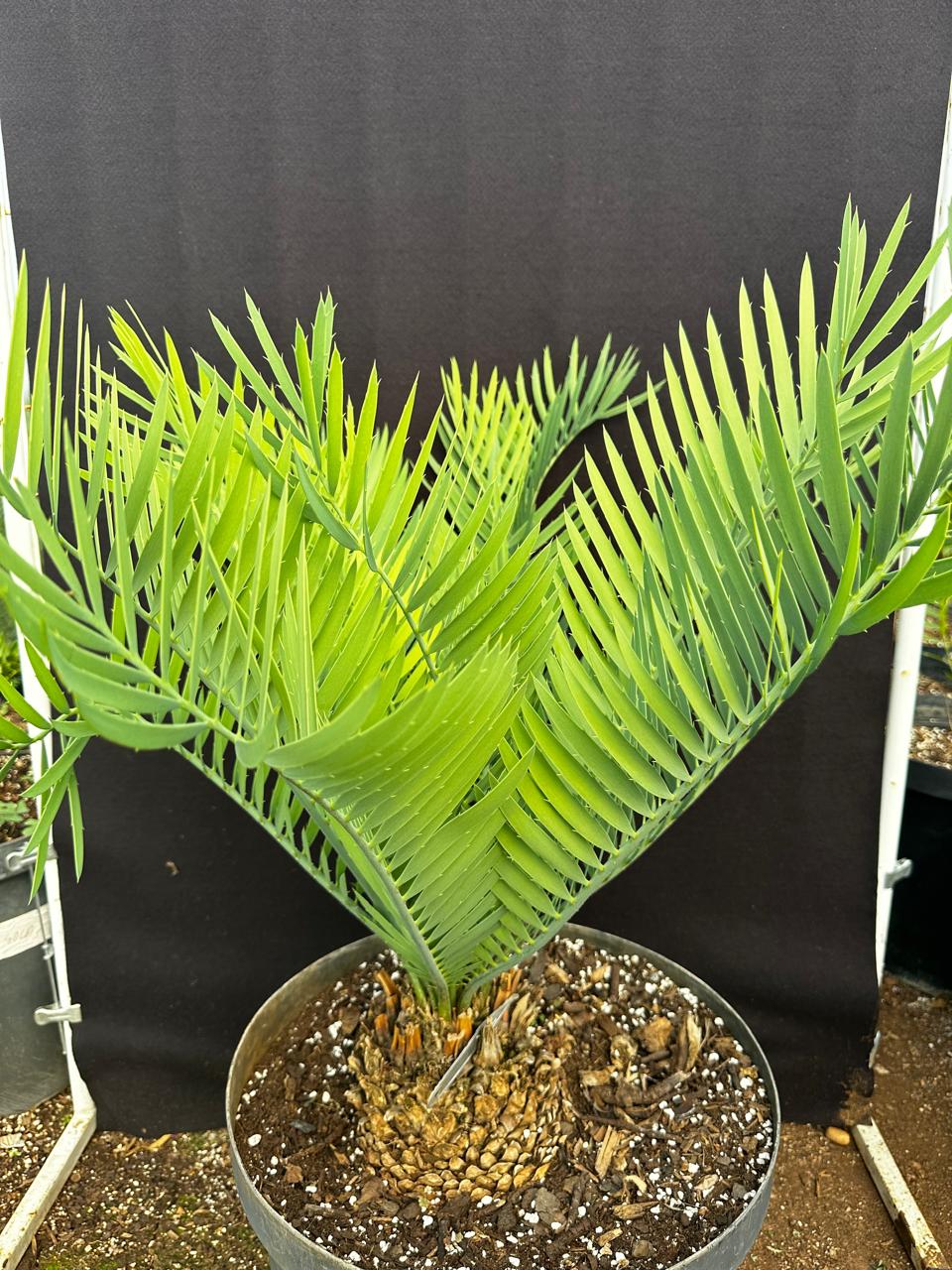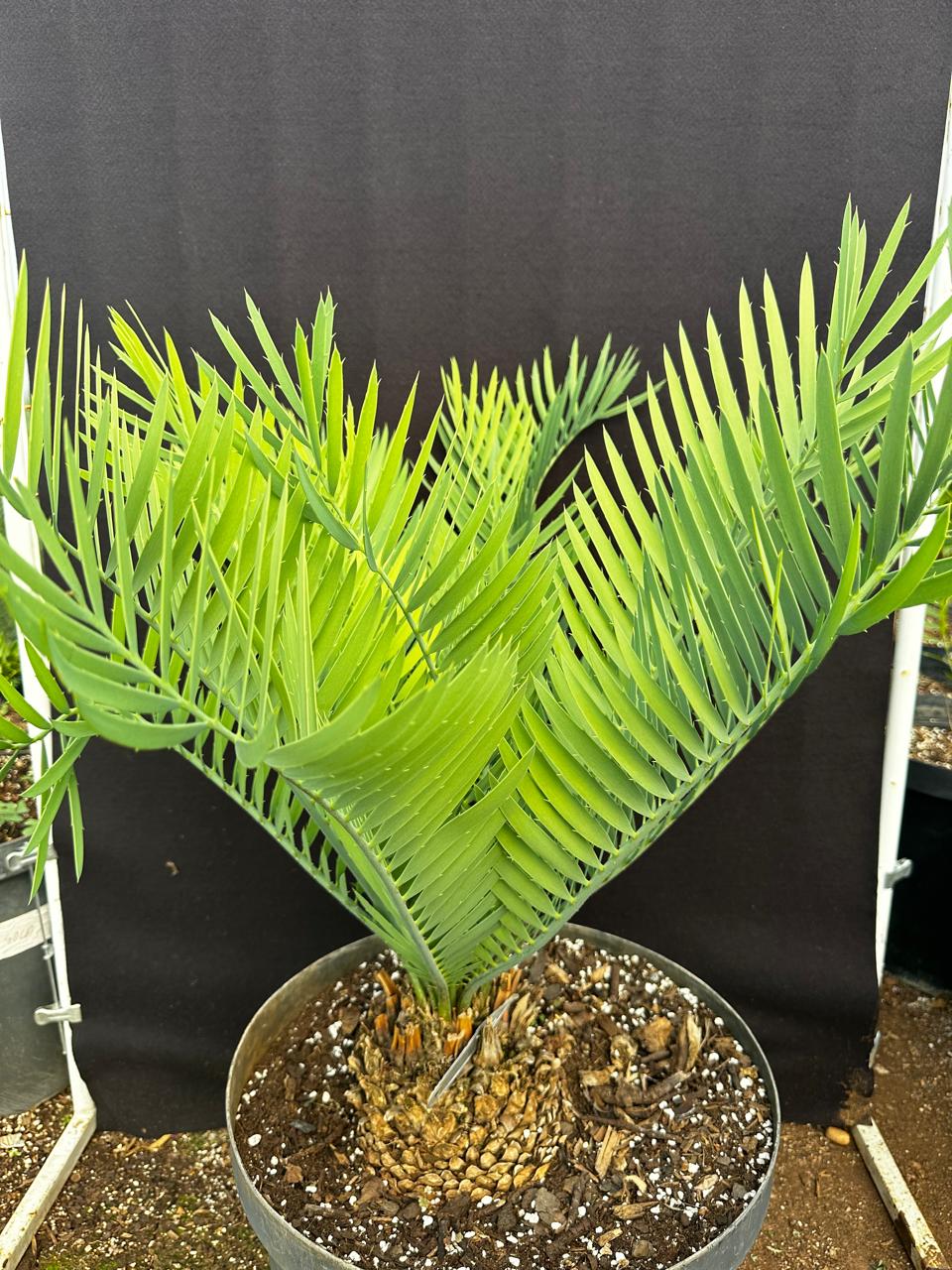

Encephalartos cupidus
The Blyde River cycad (Encephalartos cupidus) is a rare species found only in the Blyde River Canyon in South Africa's Transvaal Drakensberg region. It grows in rocky crevices and ledges along steep slopes, thriving in areas with moderate rainfall. Its population is limited, making it highly sought after by collectors.
Cones
Female cones of E. cupidus are light green at first, turning yellow as they mature. They are ovoid, measuring 18-20 cm long and 12-14 cm in diameter. The seeds are pale yellow to orange. Male cones are cylindrical, 18-20 cm long and 5-8 cm in diameter, and are borne on a peduncle measuring 6-8 cm long. Both male and female cones are covered in a fine powdery bloom when young. Cone production is infrequent, and seeds are often dispersed by baboons, which are common in the area.
Leaves
The leaves of E. cupidus are 1.2-1.4 meters long and slightly recurved. They are bright green at first, turning bluish-green with age, and are covered in a fine powdery bloom that fades over time. The median leaflets are 12-14 cm long and 1.0-1.6 cm wide, arranged in pairs along the rachis. Leaflets are smooth on both sides and occasionally have a few teeth near the base. The petiole is 12-15 cm long, and the leaflets tend to remain attached to the rachis for several years.
Stems
The stems of the Blyde River cycad are typically subterranean, with only the crown and leaves visible above the soil. In areas with shallow soil, the stems may grow to about 15 cm above ground. These thick, soft stems are highly susceptible to damage from grass fires, which are common in the cycad's habitat. The stems are also occasionally attacked by baboons and larvae of the leopard magpie moth. However, the plant's deep-rooting contractile roots help protect the stems from long-term damage.